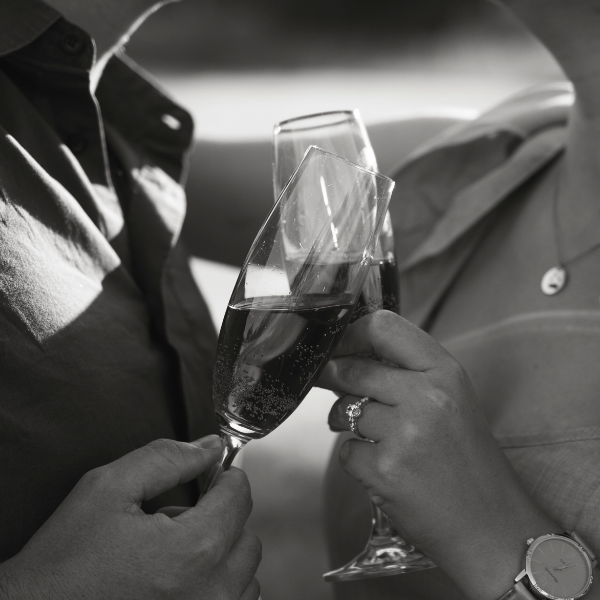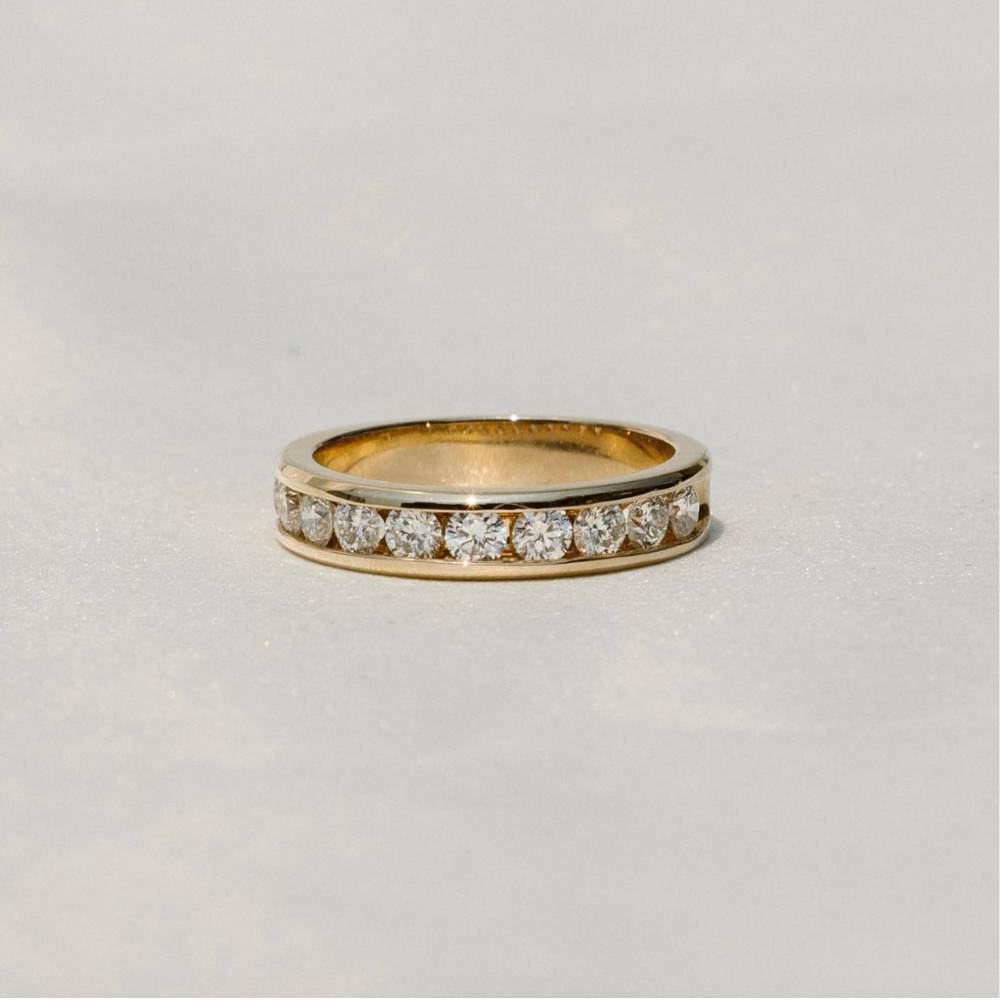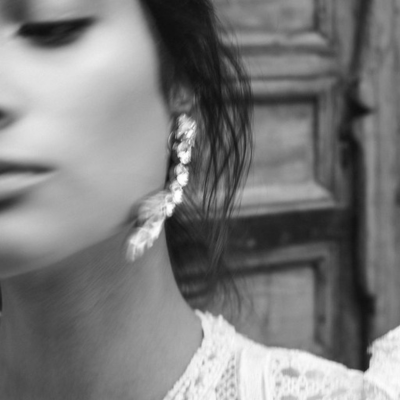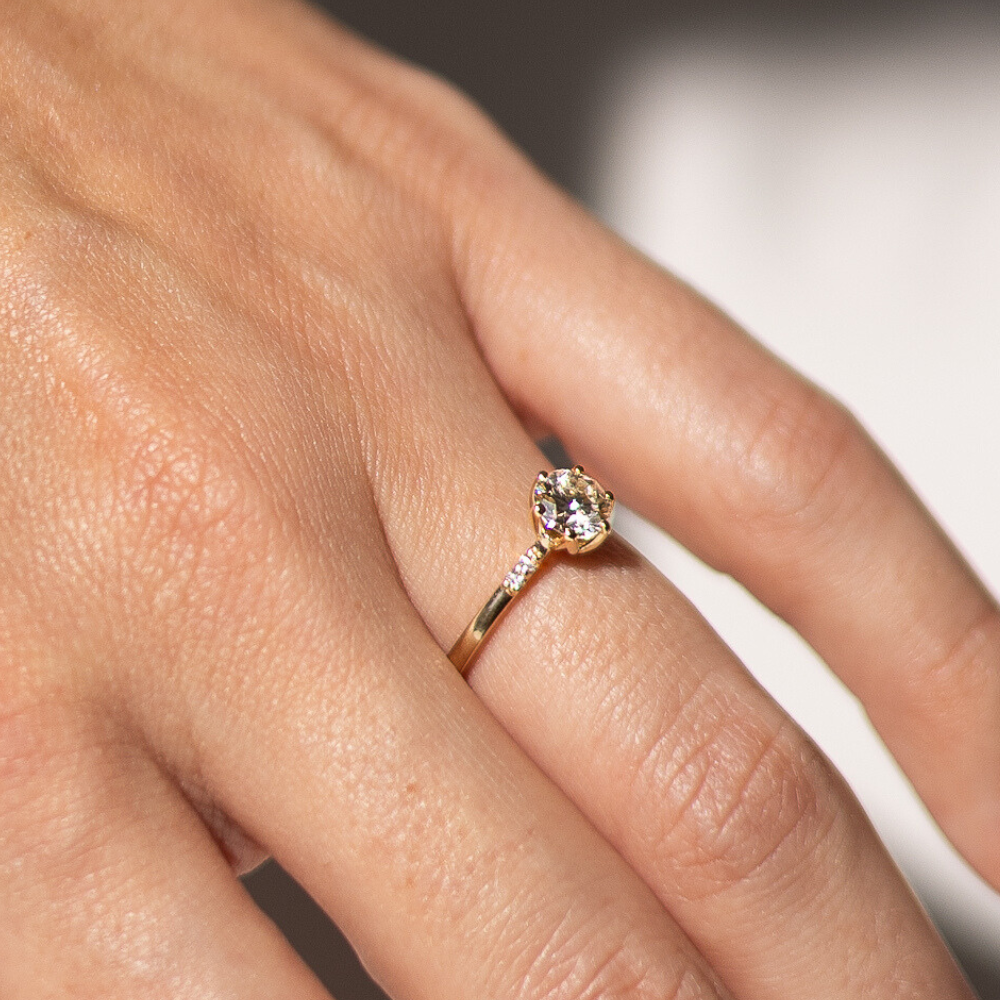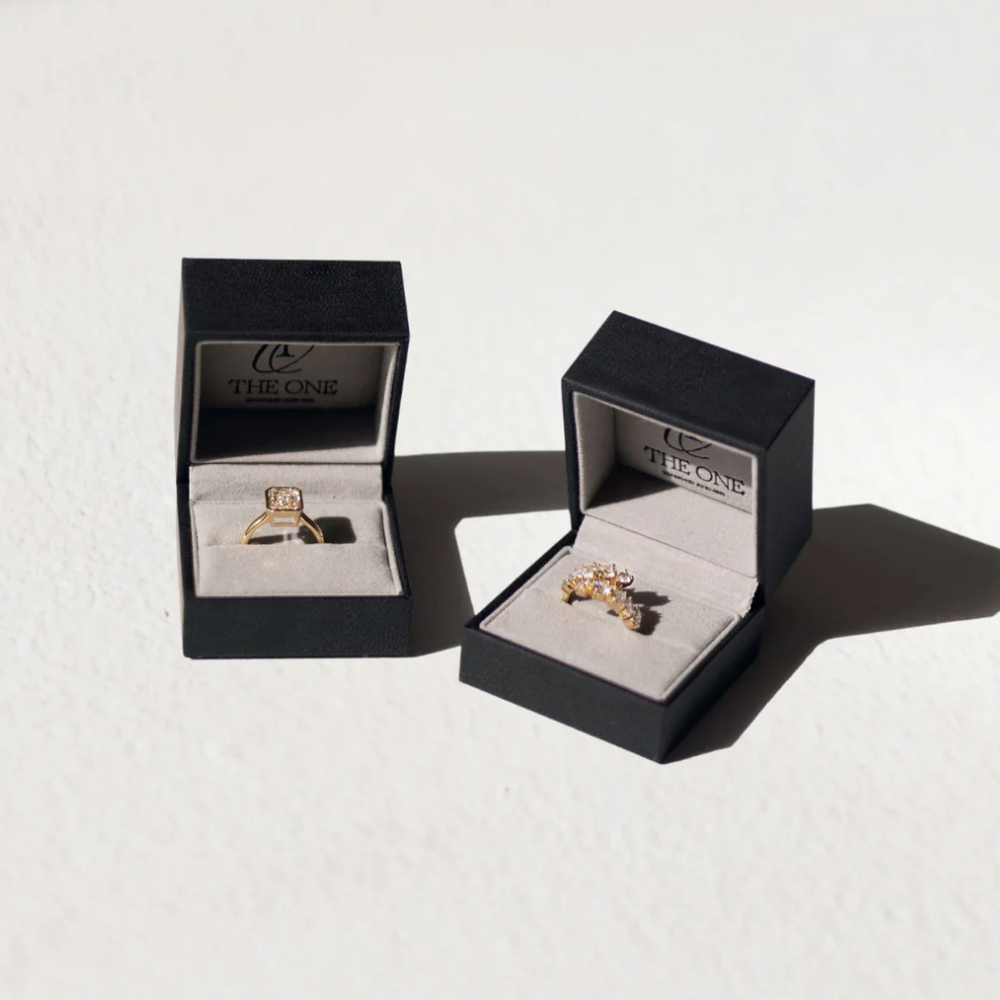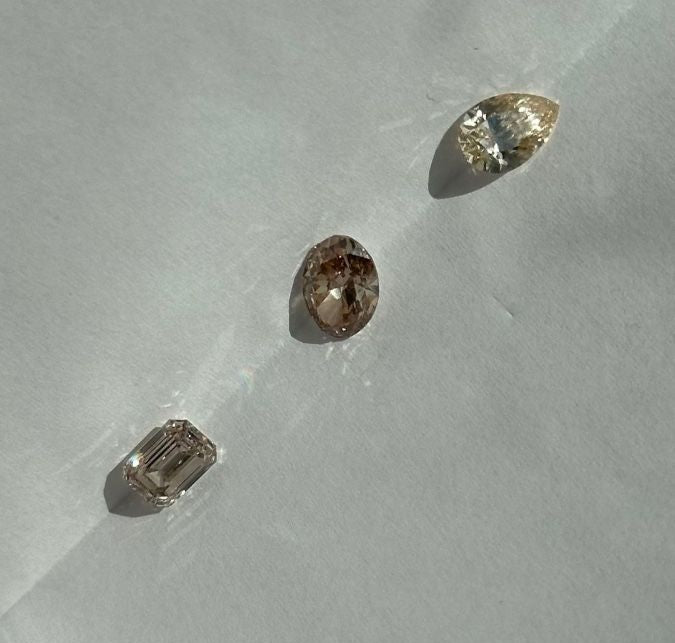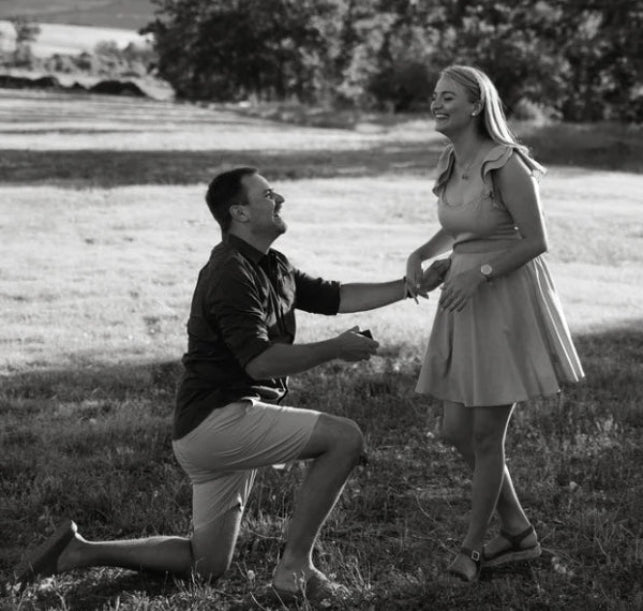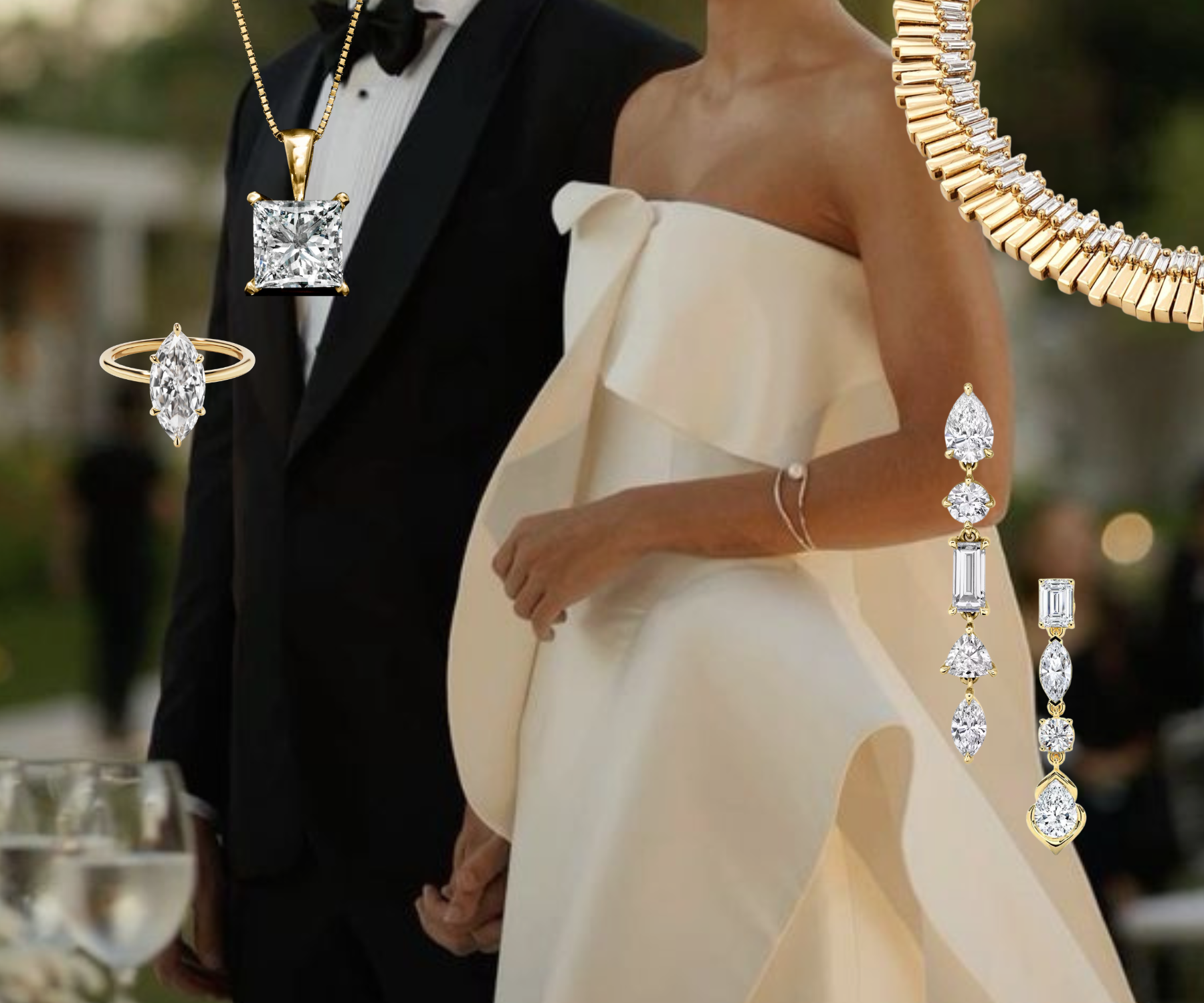Article: OUR GUIDE TO CHOOSING YOUR WEDDING BAND
OUR GUIDE TO CHOOSING YOUR WEDDING BAND
Everything you need to know to choose a wedding band you’ll love wearing forever: metals, profiles, fit, pairing, care and how we can help at Ariah Belvi.
Your wedding band is more than jewelry. It’s a quiet promise you’ll wear every day, a partner to your life and your style. But picking one isn’t as simple as “just a circle of metal.” You want something that feels like you, comfortable, meaningful, durable, beautiful.
This isn’t a checklist of cold specs. It’s your guide to making confident, heart-led choices. By the end, you’ll know the questions to ask, the trade-offs worth embracing, and how to land on a band you’ll never want to take off.

Why Your Wedding Band Matters (Beyond the Symbolism)
You’ll wear it in all the messy, real moments: cooking, building, holding hands, working, traveling, doing life. It needs to survive your life, not just look good in a showroom.
-
It’s a daily object: if it’s uncomfortable or easily scratched, you’ll resent it.
-
It carries meaning: engraving, texture, pairing with your engagement ring, these choices become narrative threads in your story.
-
It’s an investment: the metal, finish, and craftsmanship all factor into value (both sentimental and monetary).
So style matters. But durability, comfort, and longevity matter just as much.
Step 1: Start with Budget, Lifestyle & Timeline
You don’t want to fall in love with a ring you can’t afford — nor one that doesn’t match your daily life.
Budget first, then upgrade dreams second
Decide your ceiling. Know that each extra millimeter of width, extra detail, gemstone, or premium metal compounds cost. Better to start with a realistic range and then stretch (if you see something that’s worth it) than start with a fantasy and crash back.
Life test your ring choice
Think of how your hands work:
-
If you type, work with tools, play sport, cook, garden, these influence how bold or delicate your ring should be.
-
If your job demands “no jewellery” sometimes, consider how easy it is to remove/replace.
-
Decide whether you prefer something subtle or something that makes a statement.
Order early (3–4 months, ideally)
Rushed ring-making or resizing often leads to compromises. Give cushion for measurement errors, shipping delays, stone settings, resizing. And remember: resizing more than ±1 size can be tricky.
Step 2: Choose the Metal (Your Ring’s Backbone)
This is one of the biggest decisions, because it determines look, durability, patina, cost, and future maintenance.
Platinum
-
Naturally white, doesn’t need rhodium plating
-
Extremely durable, very scratch-resistant
-
Higher price, heavier weight
-
Excellent if you want something low-maintenance in color
Gold (14k vs 18k vs 10k)
-
18k is richer in gold but softer
-
14k is stronger (more alloy metal) and more practical for everyday wear
-
Yellow, white (plated or rhodium), rose are your choices in hue
-
If you pick a softer metal, avoid extremely thin widths
Palladium / Silver-White Alternatives
-
Lighter than platinum but with similar color profiles
-
Less common, so care/resizing might be more niche
-
Good for hypoallergenic or lighter feel requests
Alternative / modern metals
-
Titanium, tungsten, ceramic, mokume, carbon fiber, etc.
-
Light, durable, scratch-resistant
-
Usually non-resizable or harder to resize
-
They offer bold aesthetics, but consider trade-offs in repairability
Step 3: Profile & Width — How It Feels & Looks
Profile (cross-sectional shape)
-
Comfort-fit / curved inside: inside is rounded — smooth on your finger.
-
Flat / D-shape / court / domed: each gives different visual and mechanical feel.
-
Some profiles resist spinning or catching.
Width (millimeters)
This affects aesthetics, comfort, and how it pairs with your engagement ring.
-
For her: many women land between 2 mm and 4 mm depending on whether the engagement ring is slim or bold.
-
For him: widths often range 4 mm to 7 mm, sometimes wider depending on hand size.
-
Wider bands use more metal (cost impact) and can feel tighter around knuckles.
-
Thinner bands feel lighter and are easier to resize, but are more vulnerable to wear.
Rule of thumb: try a few widths on your finger. Let them live a few hours. See what your hand tolerates. Go with what feels invisible after a while.
Step 4: Match or Compliment Your Engagement Ring
Your wedding band usually sits next to your engagement ring. The relationship between the two can elevate both.
Matching (same metal, same finish)
Pros: seamless look, unified story
Cons: sometimes limits creative combinations or forces compromise in one ring
Complementary (contrast or subtle difference)
You can play with texture, metal hue, or width in contrast.
Curved / contoured bands
If your engagement ring has a halo, cathedral setting, or tall profile, you may want a curved or shaped band that nestles flush.
Stacking rings
Some prefer a third layering band (e.g. anniversary band). If that’s you, ensure your wedding + engagement + stacking bands play well together.
Step 5: Gemstones, Diamonds & Embellishments
Adding sparkle to your wedding band is beautiful — but it introduces trade-offs.
Eternity / full-set bands
Everywhere you look, there’s a gem. Symbolically powerful, but often nonresizable due to the full circle of stones. Beldiamond+1
Half / partial eternity
Stones only on the top half allow for resizing on bottom metal section.
Channel, pavé, flush, bead settings
Each has a different look and maintenance level. Pavé is delicate, channel is more protected.
Mixed-metal inlays, diamond accents, colored gems
Can be stunning. Just check that your jeweller can service or repair them in future.
Step 6: Fit & Sizing — Precision Matters
You want a fit that is snug enough not to slip off, and comfortable enough to live with.
-
Fingers change size (weather, time of day, diet). Try sizing at the time of day you’ll naturally wear the ring (often evening).
-
Comfort-fit interiors help mitigate tightness but feel smoother.
-
When between two sizes, people often choose the larger one for comfort.
-
Ask the jeweler about possible resizing down the road (up to ± 1 size is usually safer).
-
If your finger shape is uneven (knuckle vs base) you may opt for a split sizing or tapered band.
Step 7: Finish, Texture & Personal Touch
The surface you see and feel gives the ring its personality.
-
High polish / mirror — classic, reflective; shows scratches.
-
Matte / brushed / satin — soft, understated; hides small blemishes.
-
Hammered / textured / etched — bold, artisanal; catches light in unique ways.
-
Combination finishes — e.g. polished edges with matte center.
-
Engraving / inside words / symbols — deeply meaningful. Keep them short to preserve clarity.
Step 8: Care & Maintenance (for the decades ahead)
A gorgeous band needs care — not just because it's precious, but because your life will test it.
-
Clean with gentle products (soft brush, warm soapy water).
-
Avoid chemicals (chlorine, strong cleaners) when wearing it.
-
Remove for intense manual tasks or safety risk jobs.
-
Get professional check-ups (prong settings, stones, tightness) every 1–2 years.
-
Ask your jeweler about a lifetime servicing or polishing program.
-
Insure your ring (especially if custom or high value).
For Him — Style That Speaks Without Saying Much
Men’s rings are experiencing a style evolution: more texture, mixed materials, and architectural shapes. But comfort and solidity are still nonnegotiable.
-
Many men land on 6 mm as the sweet spot — noticeable but not heavy.
-
Use matte, brushed, hammered tonal finishes to hide small scuffs.
-
Inlays (wood, meteorite, carbon fiber) can express personality — but ensure durability.
-
Edge design (beveled, rounded) helps with snagging.
-
For men who rarely wear jewelry, comfort-fit and simpler profiles are more forgiving.

7 Questions to Ask Before You Hit “Buy”
-
Will this band pair well with your engagement ring?
-
Is the metal durable for your lifestyle?
-
Is the width ideal for your hand and comfort?
-
Can the jeweler resize later (and by how much)?
-
What finish is easiest to maintain/repair?
-
Are any stones settings protected and serviceable?
-
Is there a lifetime or servicing policy included?
How Ariah Belvi Helps You Find Your Band (Not Just Any Band)
We design with hands, life, meaning in mind. At Ariah Belvi, you get:
-
Private atelier consultations, try, feel, test
-
Custom shaping / contouring for your engagement ring
-
Finishes that age beautifully (not just “flash now”)
-
Lifetime care policy, cleaning, polishing, and resizing
-
Collaborative design, your voice matters
Ready to explore? Visit our Wedding Bands For Her collection, Wedding Bands For Him, or book a private consultation to dream up something together.


